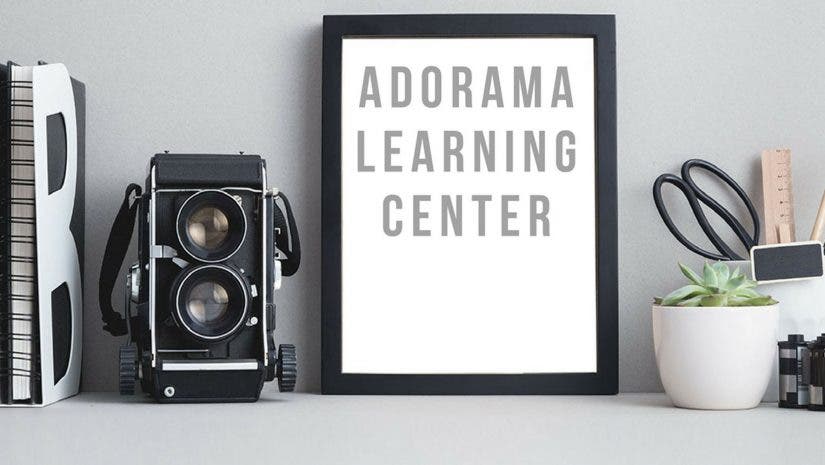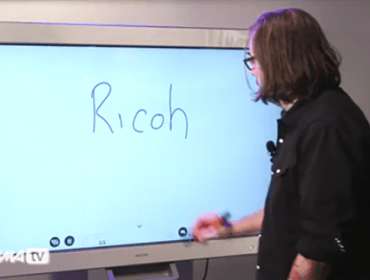In a stunning move in which two smaller, financially struggling but very innovative camera manufacturers will join forces, Hoya Corporation, which bought Pentax in 2008, has just sold its Pentax Imaging Systems division to Ricoh Company, Ltd. for $128 million dollars. According to a press release distributed this morning, all of Pentax’s business assets and shares will be transferred to Ricoh, with the merger expected to be completed by October.
With this transaction, Ricoh overnight has become a major player in the DSLR and interchangeable-lens compact camera market. But it could also be the first of many dominoes to fall. The Nikkei business daily says “the move by Ricoh could trigger a major industry realignment.” Ricoh will take over Hoya’s domestic and overseas production bases, employees and Pentax brand, according to Nikkei.
Two Struggling Brands
In May, Ricoh announced it would cut 10,000 jobs—10% of its workforce. Ricoh’s digital camera business has been unprofitable but the company hopes Pentax’s established sales channels in the US will reverse its fortunes. Hoya shipped 1.63 million digital cameras in 2010, down 10% from 2009. Ricoh is said to have shipped less than half a million cameras.
A New Player Emerges
Despite both brands’ less than stellar recent business history, with Pentax under its wing, Ricoh has strengthened its camera business and appears ready to compete at a higher level. According to the official announcement, Ricoh aims to establish a consumer business, with “small and lightweight interchangeable lens camera technology, lens technology and sales channels held by the Pentax Imaging Systems Division to pave the way for further advancement and innovations in the digital camera market.”
Intriguingly, Ricoh also plans to “create value-added businesses for taken photographs (creation and development of value-added services that encourage seeing, storing and refinishing photographs and utilize photographs as communication tools),” and possibly market medium-format digital cameras as tools for image archiving.
Hoya, which primarily purchased Pentax for $100 million in 2008 for its medical imaging business, is keeping medical imaging while selling the camera business to Ricoh.
Which Brand Name Will Survive?
According to a press release this morning, Ricoh will begin to use the Pentax brand name for some of its digital camera products, and Hoya will continue to use the Pentax brand name for their endoscopes and other products. The release states that “the Acquisition, both companies will cooperate with each other to increase the value of the Pentax brand.” This seems to indicate that Ricoh will use the more widely recognized Pentax branding for its cameras as well as continuing the Pentax line.
Ricoh sees Pentax’s line as being “complementary” with Ricoh’s with “very little overlap” in camera lines.
Scroll down to read the entire Ricoh press release.
About Pentax
Before its merger with Hoya, Pentax was known for innovative DSLRs and compact cameras but had been struggling financially. Under Hoya, Pentax continued to develop high-quality cameras such as the K-5, which boasted high image quality, a water resistant body and lenses, and a competitive price. Earlier this year, after a long gestation period, Pentax announced the 645D, their first digital medium format camera, and just last week the company unveiled the Q, an interchangeable-lens ultracompact camera built around a small sensor that Pentax claimed is the world’s smallest interchangeable-lens digital camera.
Pentax, which was first called Asahi Optical, introduced the first Japanese SLR in 1952. Over the years, generations of film photography students cut their teeth learning photography with the low-cost, basic but solid Pentax Spotmatic or its successor, the K1000, which was in production longer than any other SLR.
About Ricoh
Throughout the 70s, and 80s, Ricoh built an enthusiastic following for its intelligently desinged lineup of SLRs and compact cameras. The GR film cameras were known for their high-quality optics, and had many fans. With the advent of digital technology, Ricoh stepped back from the camera business, concentrating instead on producing Pitney Bowes copiers and other office machines.
However, Rioch continued to innovate, and was among the first companies to introduce a consumer-level digital camera, in the 1990s. For several years their cameras were only available outside the United States. In the mid-2000’s Adorama became the exclusive U.S. Distributor of Ricoh cameras. Since then the company has produced several digital versions of the GR as well as the unique GXR, a modular camera system with interchangeable lens/sensor modules, which was introduced in 2010 and continues to grow.
The following is the unedited text of the Ricoh press release.
Ricoh to acquire HOYA’s PENTAX Imaging Systems Business
Tokyo – July 1, 2011 – Ricoh Company, Ltd. (TSE: 7752; President & CEO: Shiro Kondo; hereinafter referred to as “Ricoh”) and HOYA Corporation (TSE: 7741; President & CEO: Hiroshi Suzuki; hereinafter referred to as “HOYA”) announced today that the two companies entered into a definitive agreement and concluded a contract regarding the acquisition of HOYA Corporation’s PENTAX Imaging Systems Business (hereinafter referred to as “PENTAX Imaging System Business”) by Ricoh (hereinafter referred to as “the Acquisition”).
On completion of the Acquisition, Ricoh will begin to use the PENTAX brand name for some of its digital camera products, and HOYA will continue to use the PENTAX brand name for their endoscopes and other products.
Furthermore, with the Acquisition, both companies will cooperate with each other to increase the value of the PENTAX brand.
1. Background of the Acquisition
Currently, Ricoh’s core business deals in Imaging Solutions focusing on copiers/multi- function printers, but Ricoh also has a long tradition as a camera manufacturer going back to its establishment in 1936. In 1995, Ricoh became one of the first companies to produce digital cameras. Currently, Ricoh’s high-end compact cameras are highly regarded in the market.
Although competition in the digital camera market has intensified, the industry is still growing and there is still tremendous potential for technical innovation and advancement. Ricoh understands the need to bolster its consumer businesses utilizing its strengths in optical and network technologies, and is continually searching for growth opportunities.
Meanwhile, HOYA has been operating the PENTAX Imaging Systems Business, which it acquired from PENTAX Co., Ltd., on March 31st, 2008. In the process of consolidating and streamlining its business portfolio, HOYA decided to offer this business to Ricoh. HOYA will continue to operate its business other than the PENTAX Imaging Systems Business, such as digital camera modules, DVD pick-up lenses, endoscopes, synthetic bone, and voice synthesis software.
2. PENTAX Imaging Systems Business
Asahi Optical Co., Ltd., the predecessor of PENTAX, developed Japan’s first single-lens reflex camera in 1952 and has a long history as a leader in the camera market. The company joined HOYA as a business division in April 2008 and continued to operate as a business thereafter.
The current lineup of products includes medium format, K-mount and Q-mount interchangeable-lens digital cameras, as well as the Optio brand of compact cameras. PENTAX cameras are well known for their superior performance in taking natural-looking photographs. PENTAX maintains high consumer satisfaction ratings with its superb lens technology and enjoys strong support from a solid fan base.
The PENTAX lineup has a mutually complementary relationship and little overlap with the Ricoh brand, which focuses on high-end compact digital cameras.
PENTAX Imaging Systems Business has a security camera lens module on top of the digital camera business, both of which are expected to significantly contribute to Ricoh’s opportunities for growth.
3. Strategic objectives for Ricoh
The goal of the Acquisition is to establish a firmer presence in the consumer business, which has been a considerable challenge for Ricoh.
Ricoh believes that the borderline between office and home will fade and this will be reflected in a major change in products and services. Ricoh aims to provide more consumer–oriented offerings not only in the field of digital cameras but also video conferencing systems, network appliances, and others, to their customers around the world. The Acquisition is the first step in this direction.
Ricoh intends to maximize the synergy from the merger between Ricoh’s digital camera business and PENTAX Imaging System Business in various ways.
1) Strengthening the digital camera business
2) Enhanced interchangeable-lens cameras to meet expected future growth
3) Expansion of product lineup and interchangeable lens portfolio 2) Creation of new business delivering added value to consumers
4) Creation and development of value-added businesses such as making it easy to view, save and retouch photos.
5) Other benefits
6) Possible entry into the image archiving business using medium format digital cameras
7) Expansion of security related products
4. Acquisition methodology
The Acquisition will be conducted by HOYA transferring the PENTAX Imaging Systems Business to a newly established subsidiary (hereinafter referred to as “the New Company”) through an absorption-type split and business transfer. Ricoh will then acquire 100% of the outstanding shares of the New Company.
The business is expected to be managed as a wholly owned subsidiary of Ricoh after the transfer of management rights.
* Among the European sales companies of the PENTAX Imaging System Business, PENTAX Europe Imaging System S.A.S. (hereinafter “PEIS”) is required under applicable laws to consult with its trade unions before transferring the shares of PEIS (or the stocks and equities of PEIS subsidiaries PENTAX Imaging System Limited and PENTAX Imaging System GmbH handling PENTAX Imaging System Business) to the New Company. The final decision as to whether the PEIS shares will be transferred or not will be made after conclusion of said consultation.
Signing date of a definitive agreement : July 1, 2011 Closing date : October 1, 2011 (expected)
5. Impacts on consolidated financial results of Ricoh and HOYA
Ricoh is aware that the Acquisition will have minor impacts on Ricoh’s consolidated financial results in the fiscal year ending March 2012.
As for the effects of this transaction on HOYA’s consolidated financial results, please refer to the information disclosed in a timely manner by HOYA to the Tokyo Stock Exchange.




